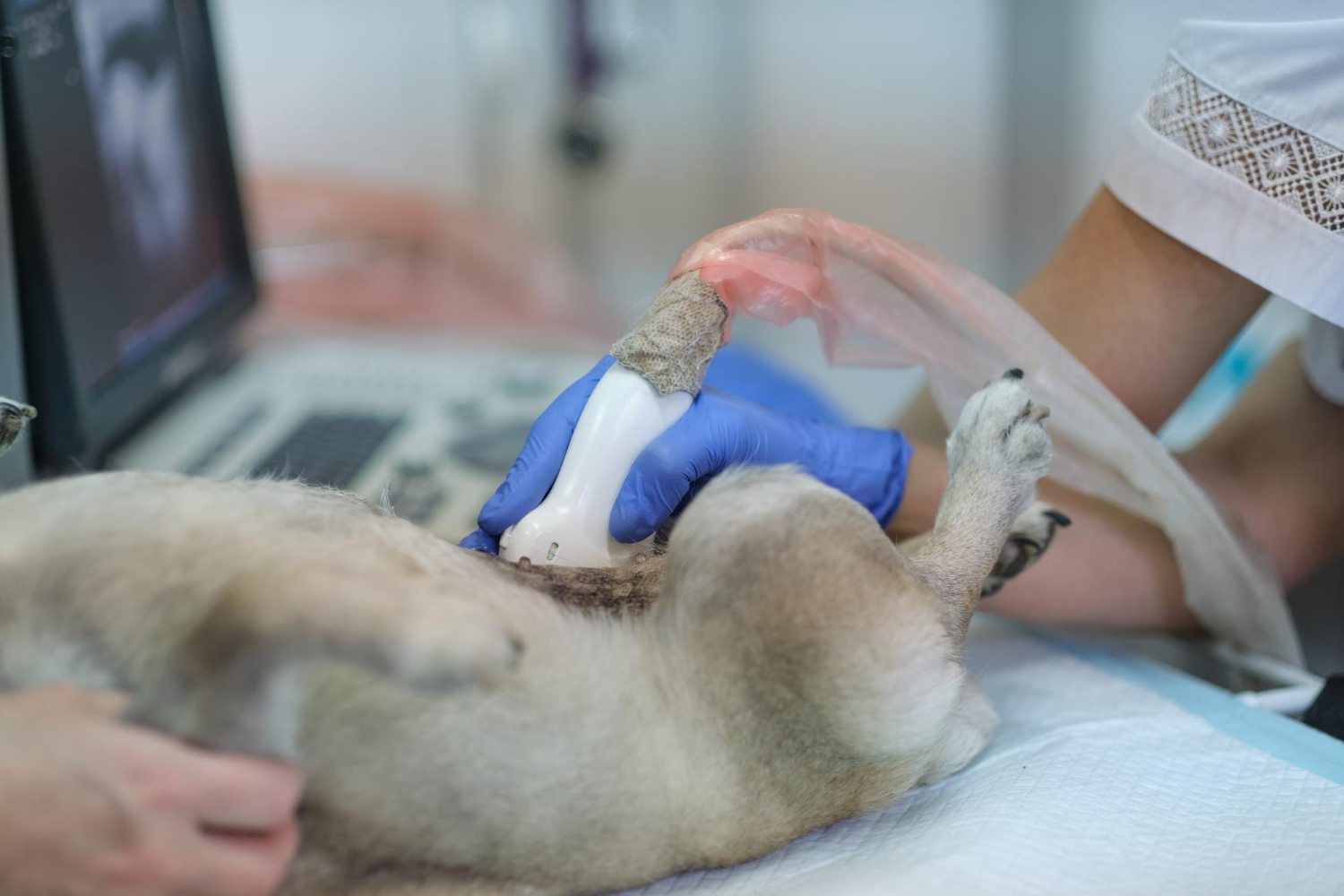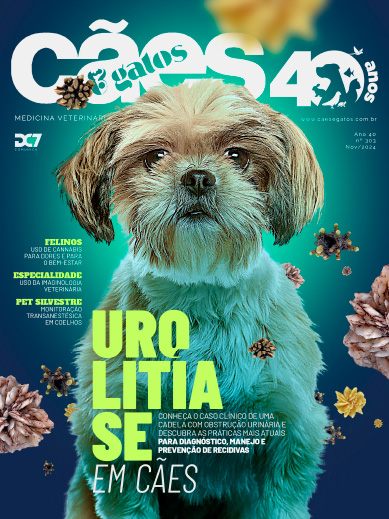A urolitíase é um problema frequente e nos últimos anos houve um aumento dos cálculos de oxalato de cálcio em cães. Este trabalho tem por objetivo descrever o atendimento de uma cadela com obstrução do trato urinário por cálculos de oxalato de cálcio.
O exame ultrassonográfico constatou que a bexiga estava preenchida por cristais e foi realizada a cistotomia para remoção dos mesmos. Exames laboratoriais, de imagem, bem como avaliação clínica, apontaram informações importantes sobre as causas bases da formação dos urólitos. A partir disso foi instituído um tratamento preventivo para evitar recidivas, que se mostrou efetivo.
Leia o artigo completo na edição de novembro de 2024.
Referências
- Alford A, Furrow E, Borofsky M, Lulich J. Animal models of naturally occurring stone disease. Nat. Rev. Urol. 2020, 17(12): 691–705.
- Kopecny L, Palm CA, Segev G, Westropp JL. Urolithiasis in dogs: Evaluation of trends in urolith composition and risk factors (2006-2018). J Vet Intern Med. 2021, 35: 1406-1415.
- Gomes VR, Ariza PC, Borges NC , Schulz FJ , Fioravanti MCS. Risk factors associated with feline urolithiasis. Vet. Res. Commun. 2018, 42 (1): 87-94.
- Pimenta MM, Reche-Júnior A , Freitas MF, et al. Estudo da ocorrência de litíase renal e ureteral em gatos com doença renal crônica. Pesq. Vet. Bras. 2014, 34(6): 555-561.
- Osborne CA, Lulich JP, Kruger JM, Ulrich LK, Koehler LA. Analysis of 451,891 canine uroliths, feline uroliths, and feline urethral plugs from 1981 to 2007: perspectives from the Minnesota Urolith Center. Vet Clin North Am Small Anim Pract. 2009, 39: 183-197.
- Lulich JP, Berent AC, Adams LG, et al. ACVIM Small Animal Consensus Recommendations on the Treatment and Prevention of Uroliths in Dogs and Cats. J Vet Intern Med. 2016, 30: 1564–1574.
- Robertson WB, Jones JS, Heaton MA, et al. Predicting the crystallization potential of urine from cats and dogs with respect to calcium oxalate and magnesium ammonium phosphate (struvite). J Nutr. 2002, 132: 1637S–1641S.
- Lulich JP, Osborne CA, Thumchai R, et al. Epidemiology of Canine Calcium Oxalate Uroliths: Identifying Risk Factors. Vet. Clin. North Am. Small Anim. 1999, 29, 113-122.
- OSBORNE CA, LULICH JP, FORRESTER D, ALBASAN H. Paradigm changes in the role of nutrition for the management of canine and feline urolithiasis. Vet Clin Small Anim. 2008, 39 (1): 12741.
- TION MT, DVORSKA J , SA SAGANUWAN. A REVIEW ON UROLITHIASIS IN DOGS AND CATS. Bulgarian Journal of Veterinary Medicine. 2015, 18 (1): 1−18.
- O’Kell AL, Grant DC, Khan SR. Pathogenesis of calcium oxalate urinary stone disease: Species comparison of humans, dogs, and cats. Urolithiasis. 2017, 45(4): 329–336.
- Bevan JM, Lulich JP, Albasan H, Osborne CA. Comparison of laser lithotripsy and cystotomy for the management of dogs with urolithiasis. J Am Vet Med Assoc. 2009, 234(10): 1286-94.
- Smith BH, Stevenson AE, Markwell PJ. Urinary relative supersaturations of calcium oxalate and struvite in cats are influenced by diet. J Nutr. 1998, 128: 2763S–2764S.
- Buckley CM, Hawthorne A, Colyer A, Stevenson AE. Effect of dietary water intake on urinary output, specific gravity and relative supersaturation for calcium oxalate and struvite in the cat. Br J Nutr. 2011, 106: S128–S130.
- Stevenson AE, Blackburn JM, Markwell PJ, Robertson WG. Nutrient intake and urine composition in calcium oxalate stone-forming dogs: comparison with healthy dogs and impact of dietary modification. Vet Ther. 2004, 5: 218-231.
- Lulich JP, Osborne CA, Nagode LA, Polzin DJ, Parke ML. Evaluation of urine and serum analytes in Miniature Schnauzers with calcium oxalate urolithiasis. Am J Vet Res. 1991, 52: 1583-1590.
- Furrow E, Pattersen EE, Armstrong JP, et al. Fasting urinary calciumto-creatinine and oxalate-to creatinine ratios in dogs with calcium oxalate urolithiasis and breed-matched controls. J Vet Intern Med. 2015, 29: 113-119.
- Dijcker JC, Hagen-Plantinga EA, Everts H, Bosch G, Kema IP, Hendriks WH. Dietary and animal-related factors associated with the rate of urinary oxalate and calcium excretion in dogs and cats. Vet Rec. 2012, 171: 46-52.
- Gnanandarajah JS, Abrahante JE, Lulich JP, Murtaugh MP. Presence of Oxalobacter formigenes in the intestinal tract is associated with the absence of calcium oxalate urolith formation in dogs. Urol Res. 2012, 40(5): 467-473.
- Lekcharoensuk C, Osborne CA, Lulich JP, et al. Associations between dry dietary factors and canine calcium oxalate uroliths. Am J Vet Res. 2002, 63: 330-337.
- Lekcharoensuk C, Lulich JP, Osborne CA, et al. Patient and environmental factors associated with calcium oxalate urolithiasis in dogs. J Am Vet Med Assoc. 2000, 217: 515-519.
- Kennedy SM, Lulich JP, Ritt MG, Furrow E. Comparison of body condition score and urinalysis variables between dogs with and without calcium oxalate uroliths. J Am Vet Med Assoc. 2016, 249: 1274-1280.
- Killilea DW, Westropp JL, Shiraki R, et al. Elemental content of calcium oxalate stones from a canine model of urinary stone disease. PLOS One. 2015, 10: 1-14.
- Furrow E, McCue ME, Lulich JP. Urinary metals in a spontaneous canine model of calcium oxalate urolithiasis. PLoS One. 2017, 12: e0176595.
- Ross SJ, CA Osborne, C Lekcharoensuk, LA Koehler, DJ Polzin. A case-control study of the effects of nephrolithiasis in cats with chronic kidney disease. Journal of the American Veterinary Medical Association. 2007, 230, 1854–1859.
- Preminger GM, HG Tiselius, DG Assimos, P Alken, AC Buck, M Gallucci, T Knoll, JE Lingeman, SY Nakada, MS Pearle, K Sarica, C Türk, J S Wolf Jr. American Urological Association Education and Research, Inc; European Association of Urology. Guideline for the management of ureteral calculi. European Urology. 2007, 52, 1610–1631.



